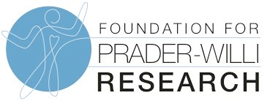Over the past 3 years we have seen a number of new companies investing in Prader-Willi Syndrome. This is in part becuase of PWS's orphan indication and the significant unmet medical need, but is also reflective of the steps we have taken as a community to position ourselves for pharma investment.
On October 30th, 2016 FPWR held its third annual clinical trials panel and shared updates from several PWS clinical trials. The video below is part 1 of 2 recordings from this panel.
In this first recording, Dr. Theresa Strong, Director of Research Programs at FPWR, presents updates on a number of clinical trials and is followed by a presentation by Dr. Neil Cowen, President and Chief Scientific Officer of Essentialis Therapeutics, who updates us on DCCR as a potential therapeucitc for PWS. A second recording provides an update on Setmelanotide (RM-493)“We are really in a different place than we were five years ago with Prader-Willi syndrome,” Strong stated, referencing the encouraging number of clinical trials currently underway. She noted, on one hand, the attractiveness of PWS as a focal point for drug companies. This is in part due to PWS’s status as an orphan indication (or rare disease) – a status which gives the drug companies some added protections, making it a potentially good investment, as she explained. On the other hand, downsides also exist for companies considering working on PWS treatments, in part because of the small number of patients available for trials, as well as because of the particular risk factors in the population. “A company has to balance that,” Strong said. To the PWS community’s great advantage, she added, is the fact that “we have a serious unmet medical need” and “[…] the FDA recognizes that.”
Strong then provided an overview of nine different current critical trials at various Phases in the drug development process:
- Oxytocin studies, at various phases, are being conducted mainly in academic settings including at the University of Florida, Albert Einstein College of Medicine, the University of Toulouse, and in Australia and the Netherlands. “There seems to be promise,” said Strong, while cautioning that work still needs to be done to determine oxytocin’s best use, as it aims to target appetite and anxiety.
- Similar to oxytocin, carbetocin is a synthetic molecule targeting appetite and behaviors. Currently the phase three trial for the drug is in the planning stage with the drug company Levo Therapeutics. Although the phase two study, conducted by Ferring Pharmaceutical, has not yet been published, Strong said that a press release from the company reported that the data were “positive.”
- French company Alize Pharma just completed a phase two clinical trial with the anti-hunger drug AZP-531. Strong reported that “they presented data at the IPWSO meeting in July, and that looked very encouraging.” Alize is now looking to move the study to phase three.
- Setmelanotide,a drug targeting weight and appetite, currently has a phase two study which is ongoing, conducted by the Rhythm Pharmaceuticals.
- Trials for beloranib, a weight and appetite management drug by Zafgen, have been halted at phase three, due to two deaths related to blood clotting issues. Acknowledging the tragedy of this outcome, Strong at the same time found encouragement in some of the data from these trials, in that they showed that “a drug could impact hyperphagia in PWS.”
- The company INSYS is looking at CBD oil to reduce hyperphagia and impact behavior.
- Strong also briefly mentioned the completion of phase two trials of diazoxide-CCR, conducted by Essentialis. (This trial is explained in greater detail, below, by Dr. Cowen.)
- Finally, Strong briefly described two ongoing, pilot studies of devices to affect PWS. One such study, by Dr. Holland at the University of Cambridge uses VNS (Vagus Nerve Stimulation), examining its effect on improving behaviors in PWS patients. This study is an expansion of a smaller study which showed initial, favorable results.
- The second trial, by Dr. Butler at the University of Kansas Medical Center, uses tDCS (transcranial direct current stimulation) and involves a very mild stimulation on parts of the brain, targeting appetite.
The second presenter, Dr. Neil Cowen, discussed his company’s drug diazoxide-CCR (DCCR), as it performed in a phase two trial-CCR (DCCR), as it performed in a phase two trial. By way of background, Cowen explained that diazoxide, the parent molecule of DCCR, has long been in clinical use. “It’s been approved for about forty years for the treatment of hypoglycemic, hypoinsulinemic conditions.” This history, Cowen noted, helps “us understand and have confidence in the safety profile of our drug.”
Cowen then described the four important aspects of PWS targeted by DCCR. Of the first, the dysregulation of the hypothalamus leading to hyperphagia, he explained, “our drug helps mimic the regulatory mechanisms that can bring that under control, and then over longer term treatment actually improves the regulation of those neurons that are involved in appetite and energy expenditure.” Secondly, regarding adipocytes, DCCR “reduce[s] fat stores.” Third, at the level of the central nervous system, the drug “helps to amplify [… the] GABA signal and reduce […] aggressive behaviors.” Here, Cowen noted that research has shown that low levels of the neurotransmitter GABA in PWS patients have been linked to such behaviors. Finally, concerning muscle, trials have shown that the drug “may increase muscle mass and reduce hypotonia by reducing atrophy,” Cowen said.
The findings summarized above are supported by data, presented by Cowen, gleaned from patients participating in a three-month study. Particularly compelling results include those related to hyperphagia, which was measured via questionnaires that assessed a range of food-related behaviors. From a baseline of moderate to severe hyperphagia patients experienced a significant change over the course of ten weeks of treatment, with about 35% improvement on average. Among the participants, Cowen reported, “we had patients who were skipping meals and declining food offered to them -- even after an overnight fast -- and [who] stopped asking about meals, which are all behaviors that you wouldn’t see in the absence of an intervention that was effective.”
Regarding body fat, data shows about 4% reduction of body fat and about 5% increase in lean body mass, on average, in the 10-week period. These effects, Cowen pointed out, are independent of and “additive to what growth hormone does,” as only part of the tested population was on GH. Regarding behaviors, Cowen offered a snapshot of one of the subsets of behaviors measured in the trials. For this particular subset, encompassing aggressive, destructive or threatening behaviors, Cowen reported about 73% of the time, individual behaviors among participants stopped. “But even more notably, at baseline about 70% of the patients in the study displayed one or more of those behaviors, and at the end of treatment only 20% did.” Additional results, elaborated briefly by Cowen, included beneficial changes to blood lipids, and improvements in insulin sensitivity.
At the close of his talk, Cowen discussed plans for a dose-ranging study, to include 75-90 patients, with an anticipated mid-year [2017] start. The study will continue to focus on the effectiveness of the drug in relation to hyperphagia, behaviors, body fat, and quality of life issues.
For updated information on PWS clinical trial opportunities and to sign up for a monthly PWS Clinical Trial Alert, visit the PWS Clinical Trials page.







